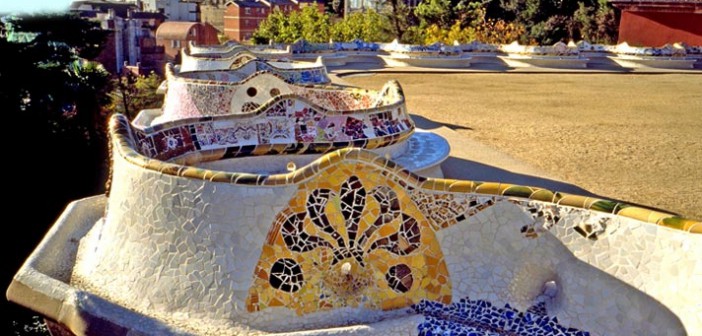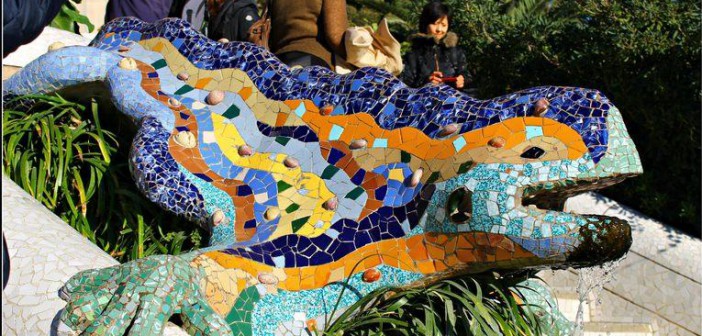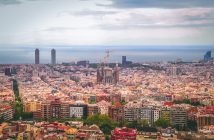This was originally conceived by Eusebi Güell as a luxury housing estate that was to have space for sixty lots, and was designed by Antoni Gaudí. Despite its magnificent views and ambitious planning only two houses were built. Gaudí lived in one of these houses from 1906-1926; this is now the Gaudí House Museum, which declared a historical and artistic monument of national interest in 1969. When the original vision was shelved, the land was given to the local council as a public park.
Countless beautiful features make the Park Güell an essential attraction for any visitor to Barcelona, as well as a popular place for locals to spend a sunny afternoon. Gaudí’s undisputed mastery of asymmetrical architectural forms takes on a life of its own here, with unusual shapes that echo an aquatic wonderland. At the highest point of the Park Güell there’s a tower with a cross, a reminder of both Güell’s and Gaudí’s staunch Catholicism. The views from here and indeed from the whole park are truly breathtaking as you can see the city of Barcelona and its landmarks against a backdrop of the Mediterranean.
Several caverns have gnarled stone columns that evoke tree trucks and rambling branches, and there is a cave that is shaped like the inside of a whale. Talented musicians delight appreciative crowds with everything from classical Spanish guitar and jazz, to regulars such as the ska-indie group Las Mañaners, and a steel drum player that can usually be found under a large olive tree.
The ornamental area of Park Güell has limited access and a ticket is required. This area includes the iconic dragon statue, which has become emblematic of Gaudí and even of Barcelona itself. The dragon seems to be guarding the park and is representative of the magical characteristics of Gaudí’s work. He loved nature and geometry, creating many designs influenced by nature, such as trees, lizards, bones, and dragons. Nature, he once said, was “the great book, always open, that we should force ourselves to read.” The colour and trencadis used on the dragon is also typical of Gaudí. Trencadis is a decorative form, consisting of smashing up ceramics and putting them back together in a pattern. The water trickling out of its mouth is part of an amazing system with 2,600 gallons of water that is stored and collected during the rainy months.
Another iconic feature is the large open esplanade with undulating mosaic seating covered with ornate mosaic tiling. There is also a pavilion area, which was originally designed as a marketplace. Its aquatic themed mandalas include a sun, moon, and quirky octopus.
If you’re planning to visit the ornamental part of Park Güell it’s recommended that you book you ticket online in advance to avoid disappointment or queues.
Info:
Address:
C/d’Olot
Area:
Gràcia
Open:
Depends on season, normally 10am til dusk
Website:
www.parkguell.cat
Book your ticket online and save time and money.
Limited access to the ornamental area with assigned entrance times.
Where:





1 Comment
Pingback: 10 Beautiful Places in Barcelona. #3 Is Breathtaking!